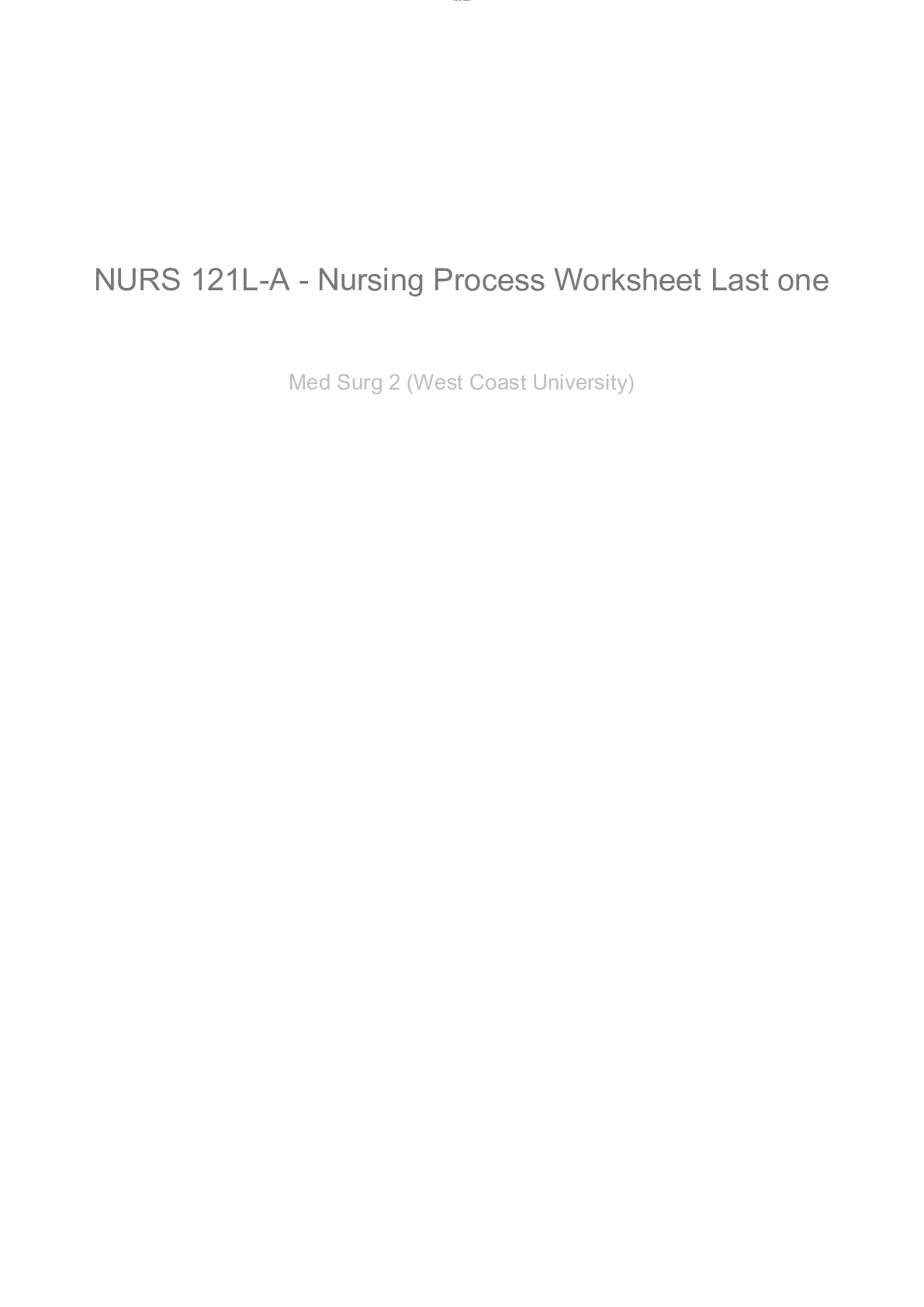Biology > Study Notes > Biology (BIOL 235) Chapter 1-10 typed notes (All)
Biology (BIOL 235) Chapter 1-10 typed notes
Document Content and Description Below
Chapter 1 1.1 Anatomy and Physiology Anatomy: study of body structures and relation to one another Physiology: study of function of an organism or its parts Embryology: first 8 weeks of developme... nt after fertilization of a human egg Developmental biology: the complete development of an individual from fertilization to death Cell biology: cellular structure and functions Histology: microscopic structure of tissues Gross anatomy: structures that can be examined without a microscope Systemic anatomy: structure of specific systems of the body such as the nervous or resp systems Regional anatomy: specific regions of the body, ex head or chest Surface anatomy: surface markings of the body to understand internal anatomy through visualization and palpation Imaging anatomy: body structures that can be visualized with techniques ex x-ray, MRI, CT Pathological anatomy: Structural changes (gross to microscopic) associated with disease Neurophysiology: functional properties of nerve cells Endocrinology: hormones (chem runs in blood) and how they control body functions Cardiovascular physiology: functions of heart and blood vessels Immunology: the body’s defenses against disease causing agents Respiratory physiology: functions of the airways and lungs Renal physiology: functions of the kidneys Exercise physiology: changes in cell and organ functions due to muscular activity Pathophysiology: fcnal changes assoc with disease and aging. 1.2 Levels of Structural Organization and Body Systems Chemical Level: very basic level; includes atoms and molecules. Atom: unit of matter that makes up a chemical element; consists of nucleus (with protons and neutrons) and electrons orbiting nucleus Molecule: a combination of two or more atoms that share electrons Atoms essential to maintain life: Carbon, hydrogen, Oxygen, Nitrogen, Phosphorus, Calcium, Sulfur Common molecules: DNA, glucose Cellular level: molecules combine to form cells. Cell: the basic structural and functional unit of all organisms; smallest structure capable of performing all activities vital to life. Tissue level: cells combine to form tissues Tissue: a group of similar cells and their intercellular substance joined together to perform a specific fcn 4 basic types of tissue in body: epithelial, connective, muscular, nervous Epithelial tissue: covers body surfaces, lines hollow organs and cavities, forms glands Connective tissue: connects, supports, protects body organs while distributing blood vessels to other tissues Muscular tissue: contracts to make body parts move and generates heat Nervous tissue: carries info from one part of body to another through nerve impulses. Organ level: different types of tissues join together Organ: structures composed of two or more different types of tissues to perform specific functions, usually have recognizable shapes. Ex skin, liver, stomach, bones, heart, lungs, brain System level: related organs with a common function. Ex digestive system incl mouth, salivary glands, pharynx, esophagus, stomach, small intestine, large intestine, liver, gall bladder, pancreas. Sometimes an organ is part of more than one system ex pancreas = digestive and endocrine Organismal level: all the parts of the human body fcning together constitute the total organism. The 11 body systems: [Show More]
Last updated: 1 year ago
Preview 1 out of 149 pages
.png)
Reviews( 0 )
Document information
Connected school, study & course
About the document
Uploaded On
Jun 26, 2021
Number of pages
149
Written in
Additional information
This document has been written for:
Uploaded
Jun 26, 2021
Downloads
0
Views
88

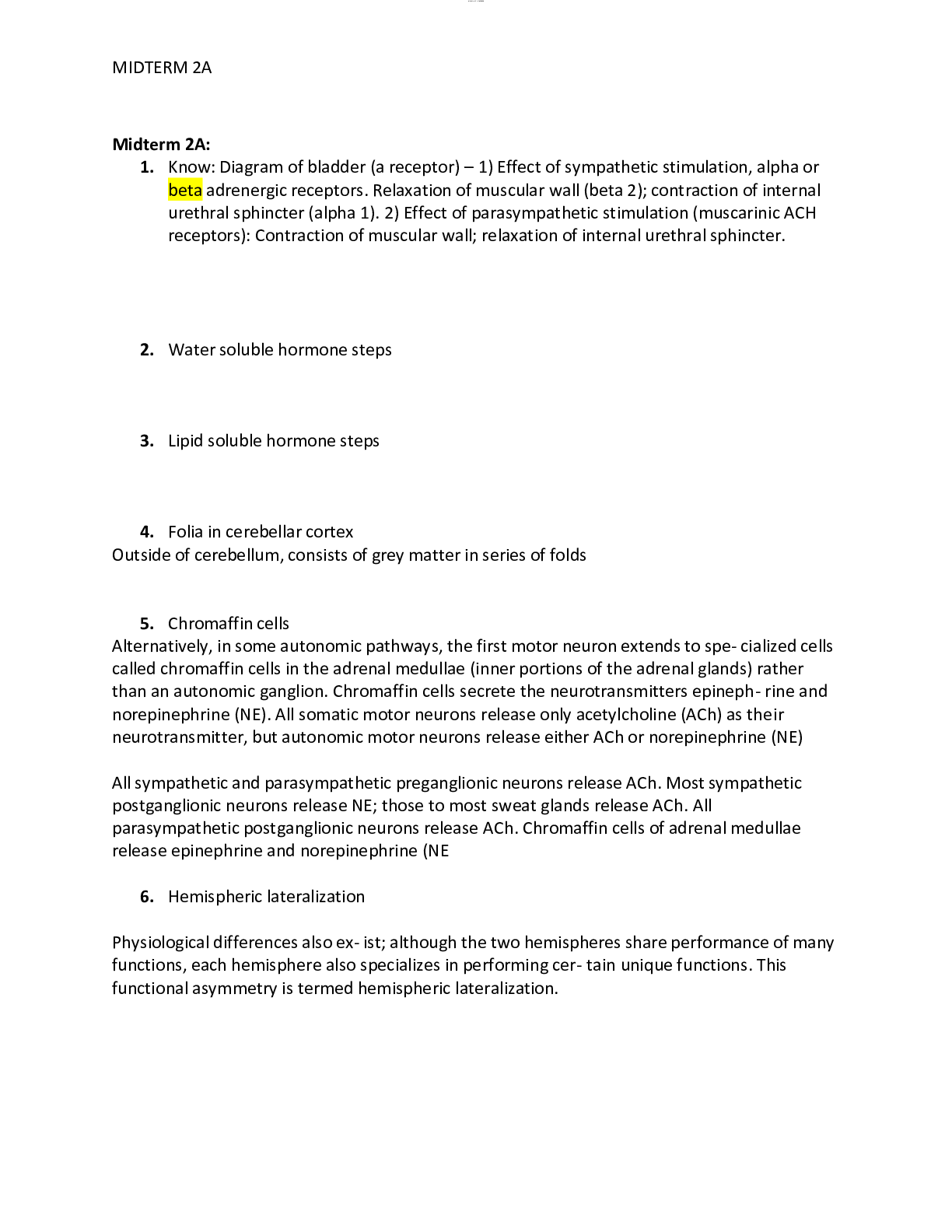
.png)

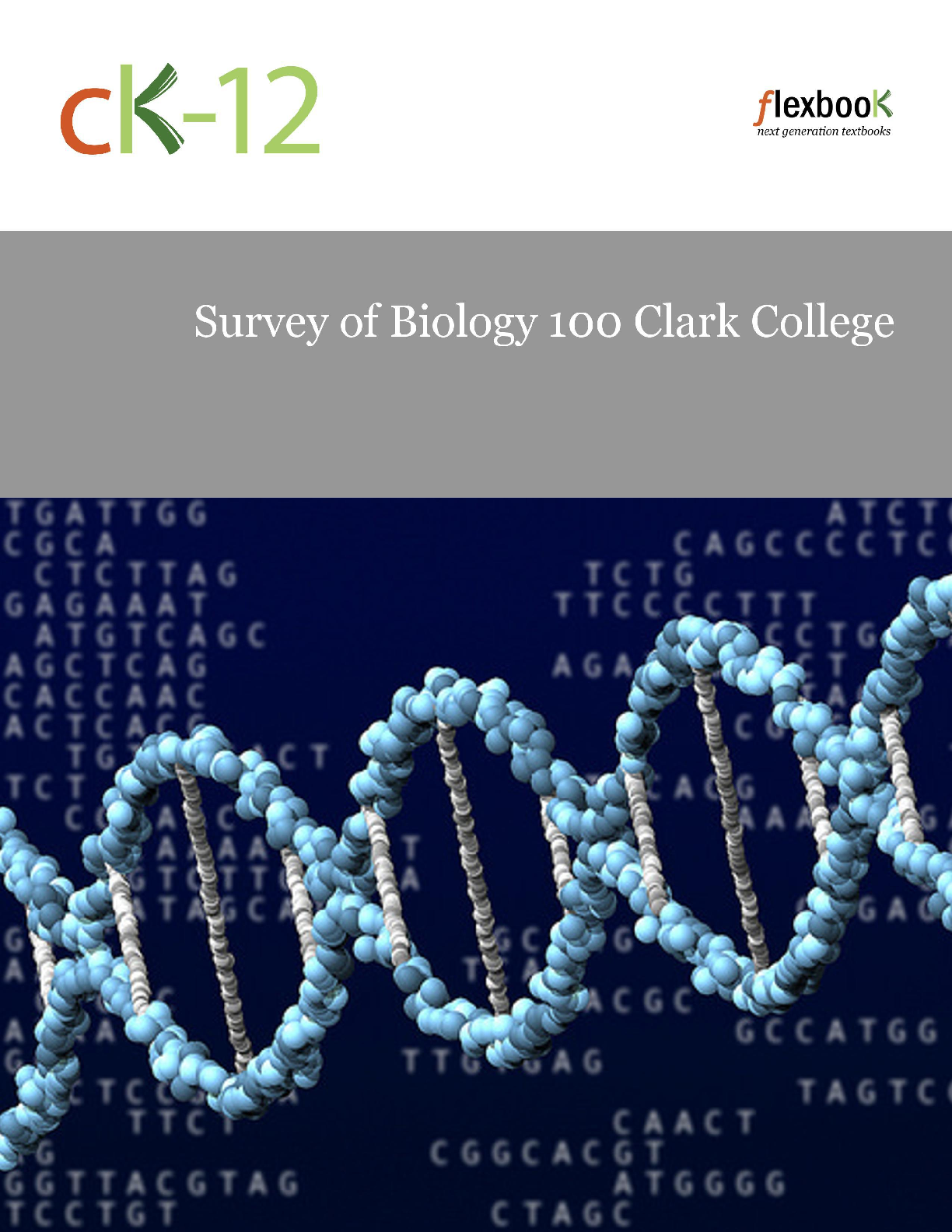
.png)
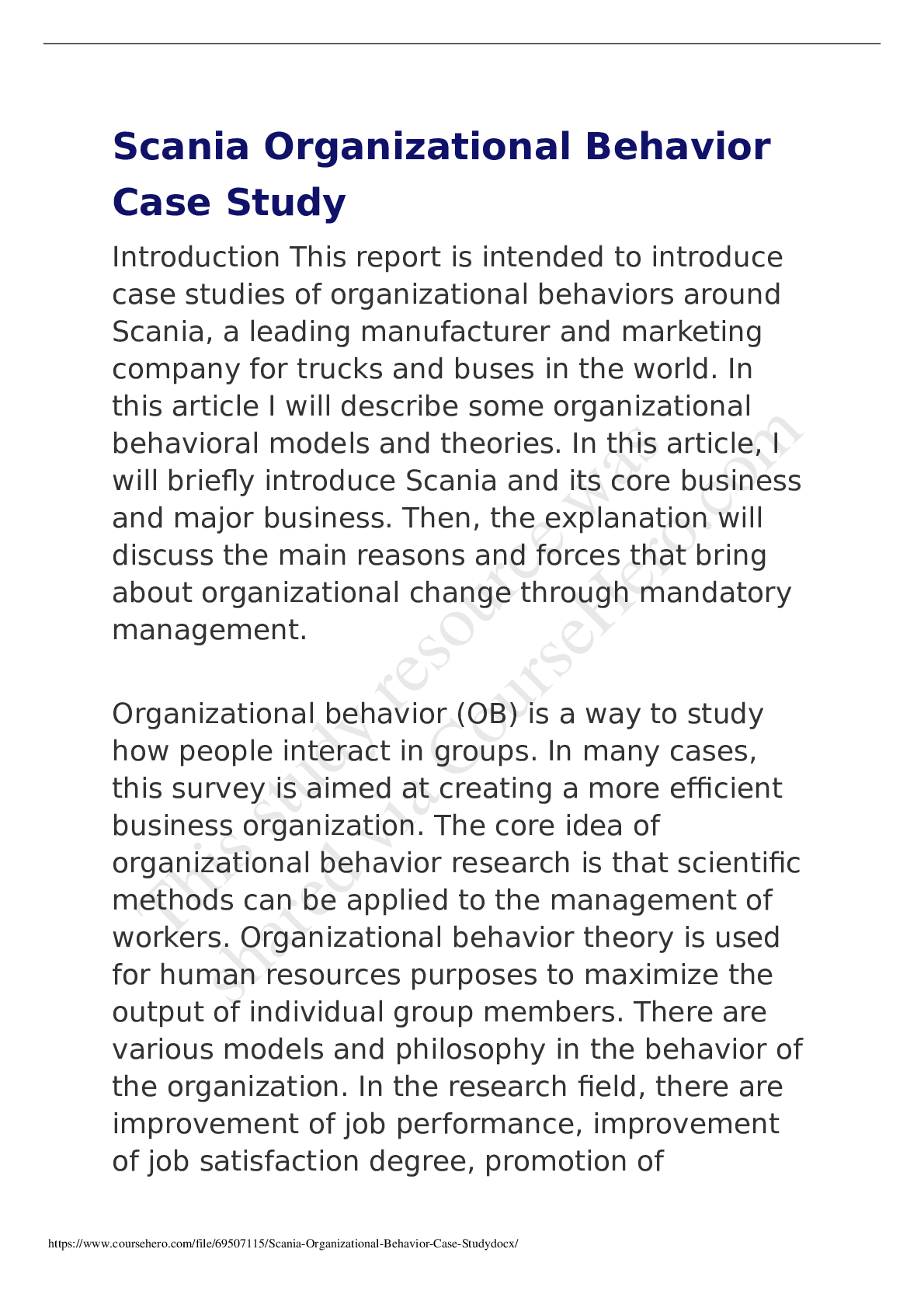

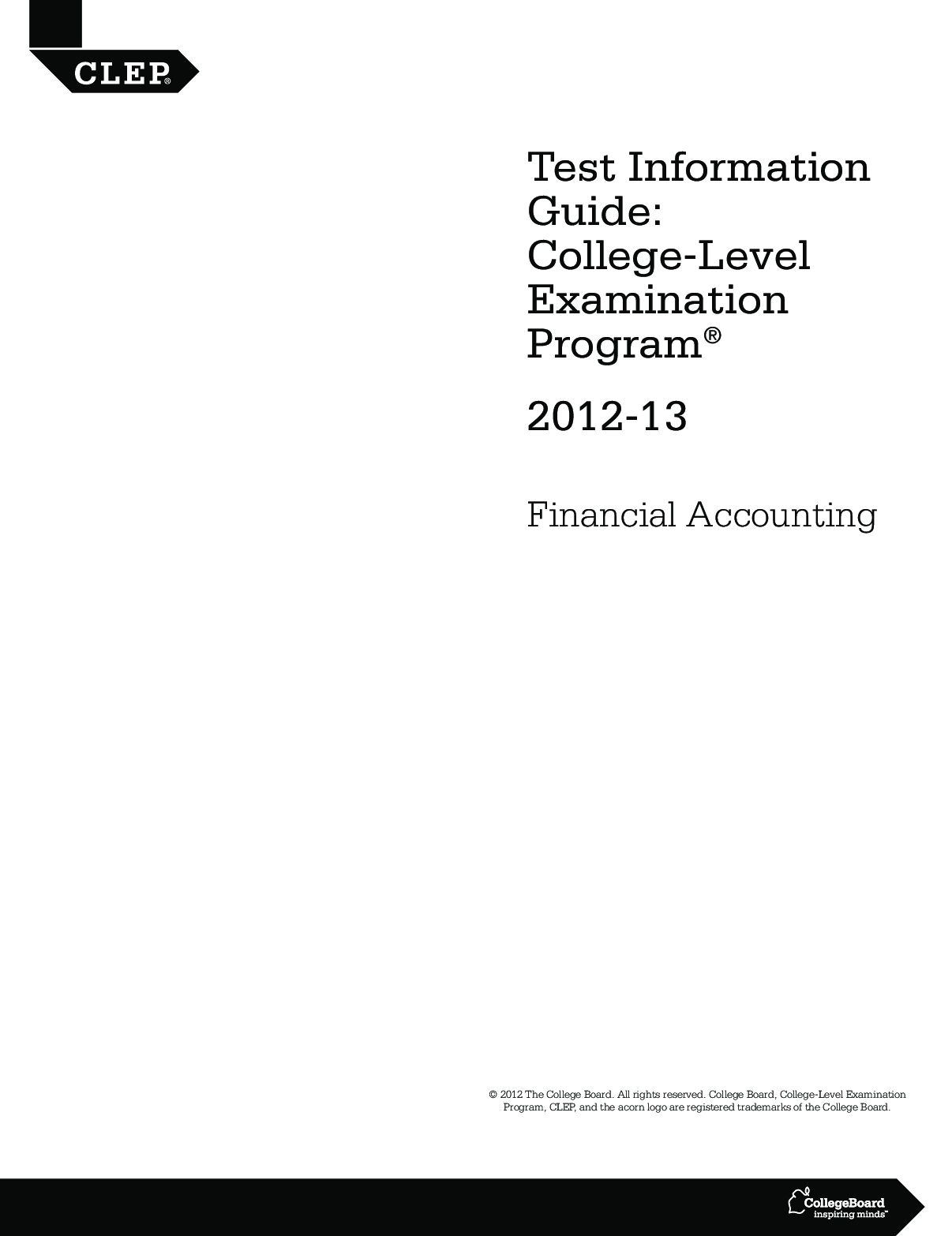


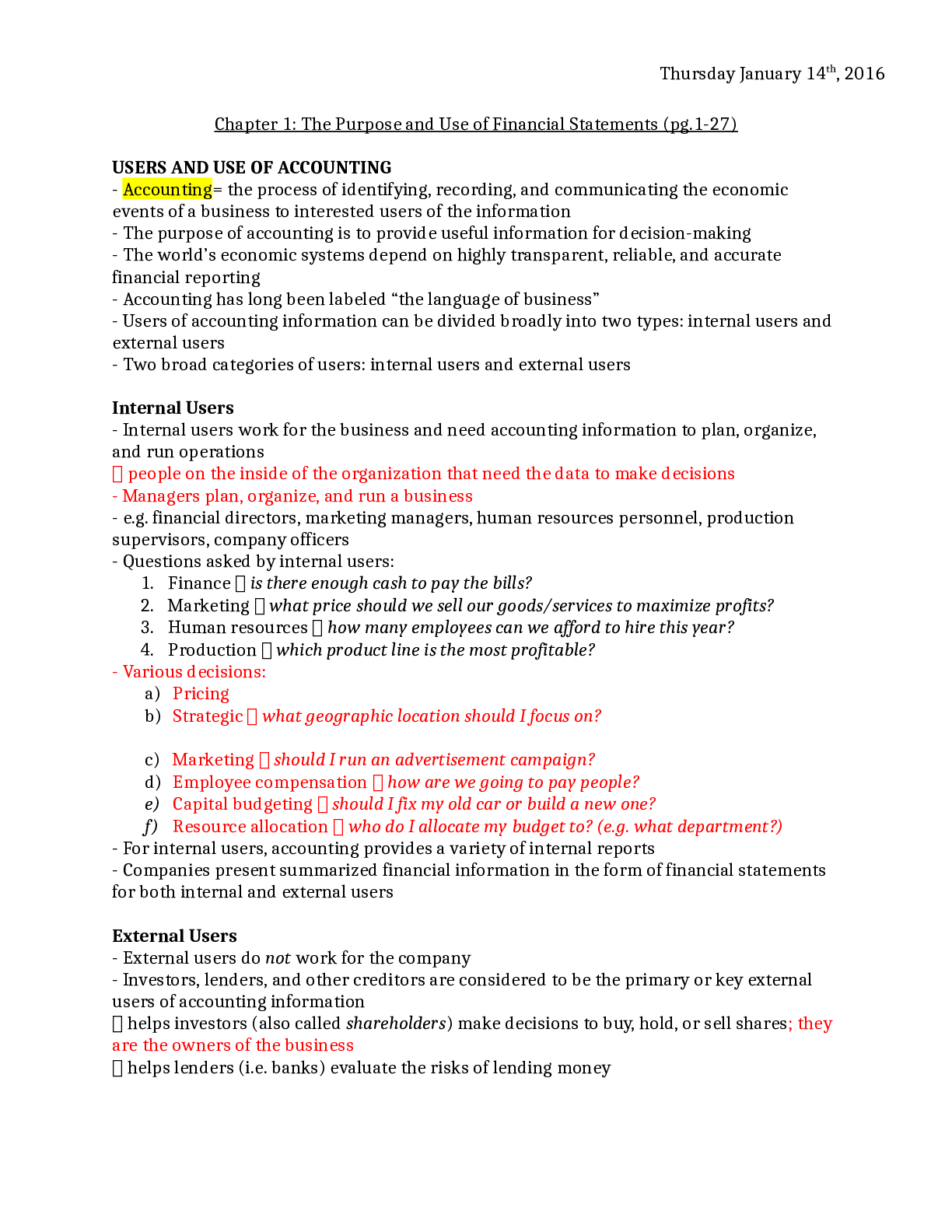





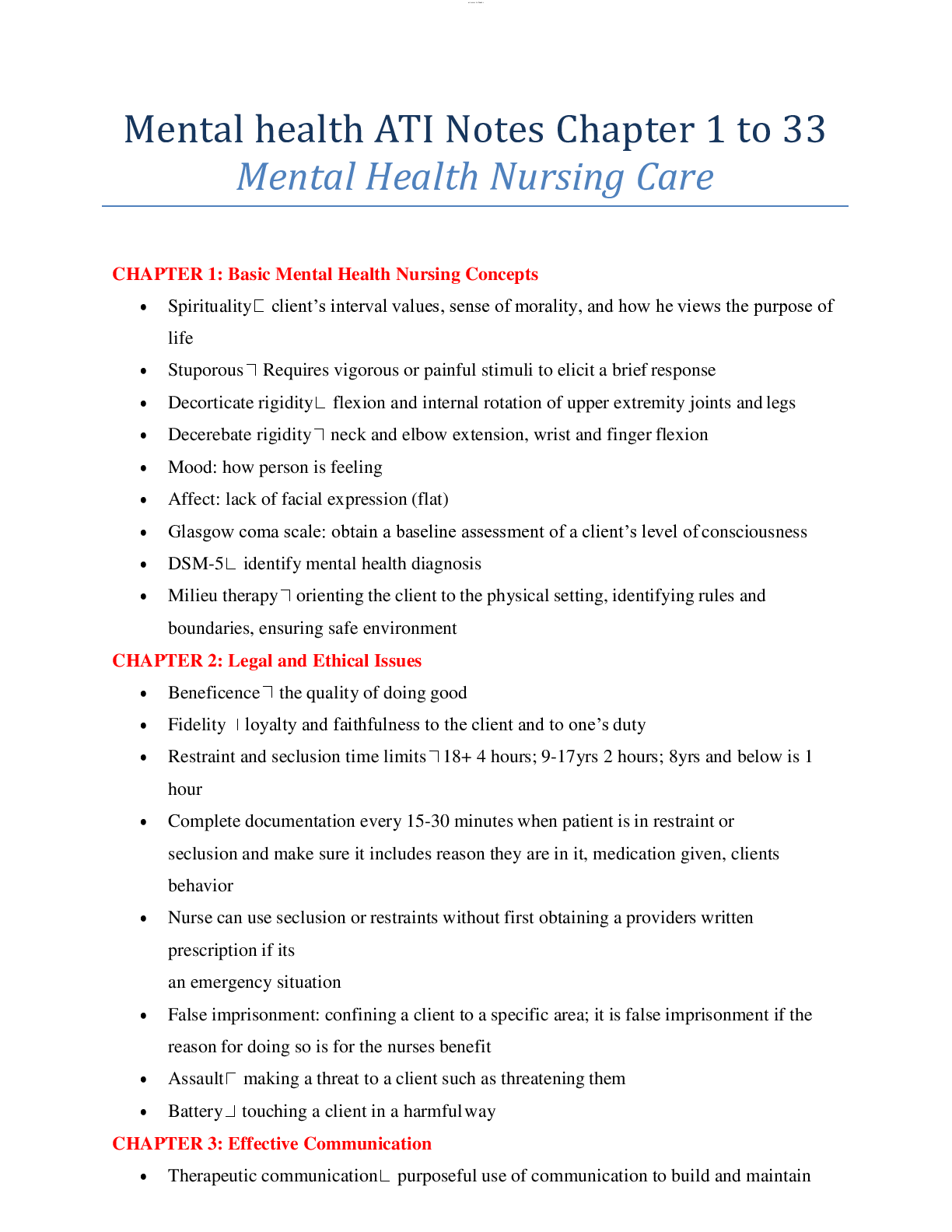
.png)


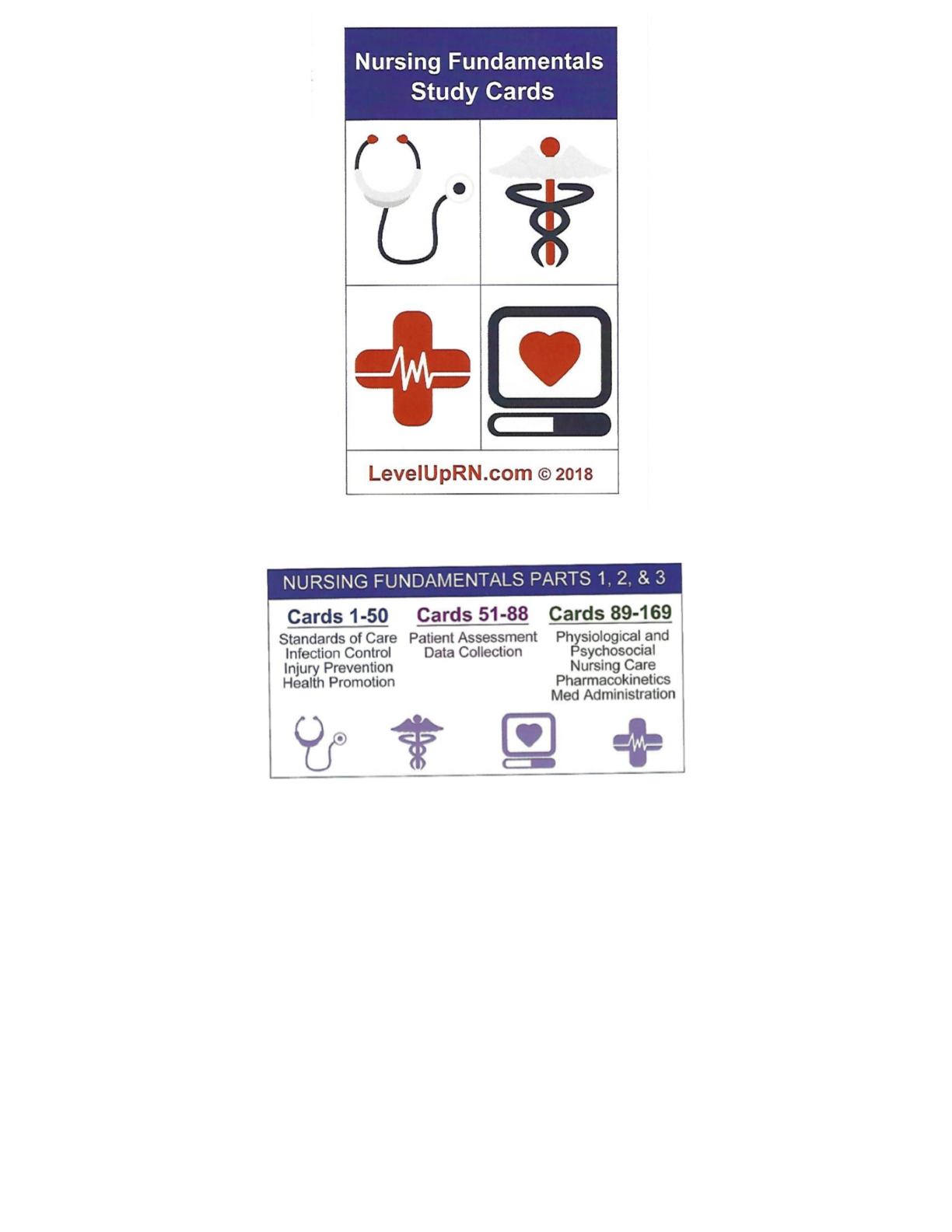

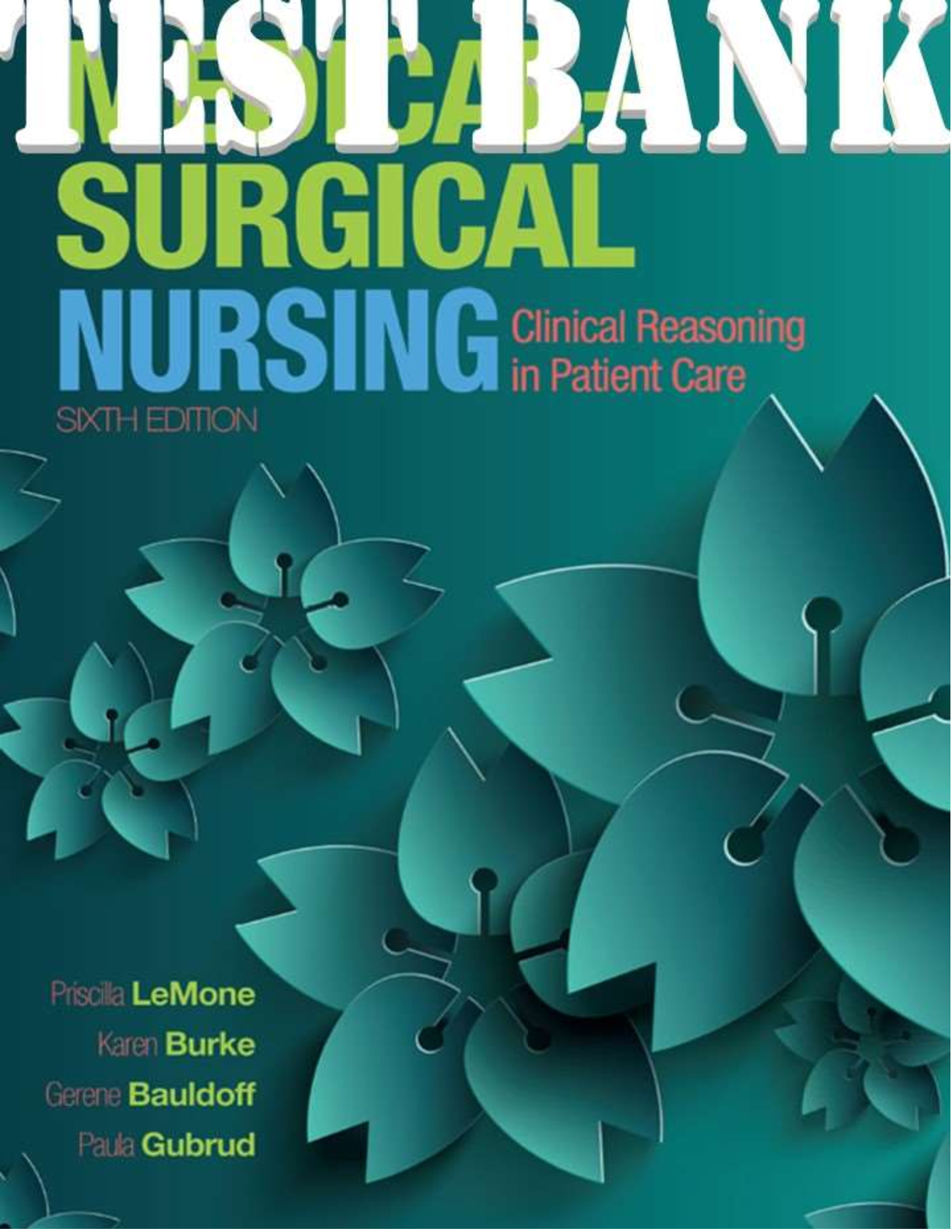
.png)

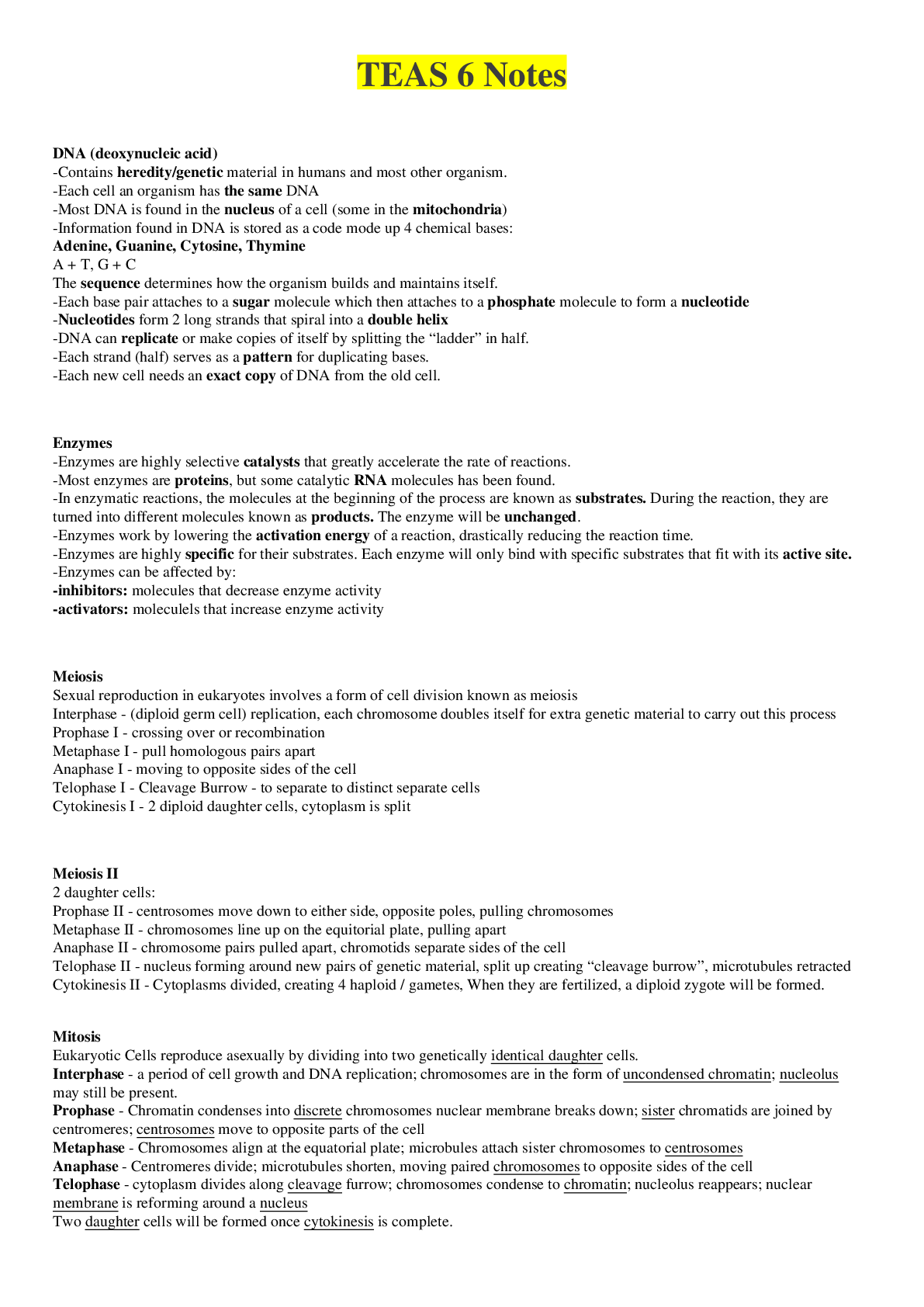

How Do Geographically Dispersed Teams Collaborate Effectively Paper.png)





